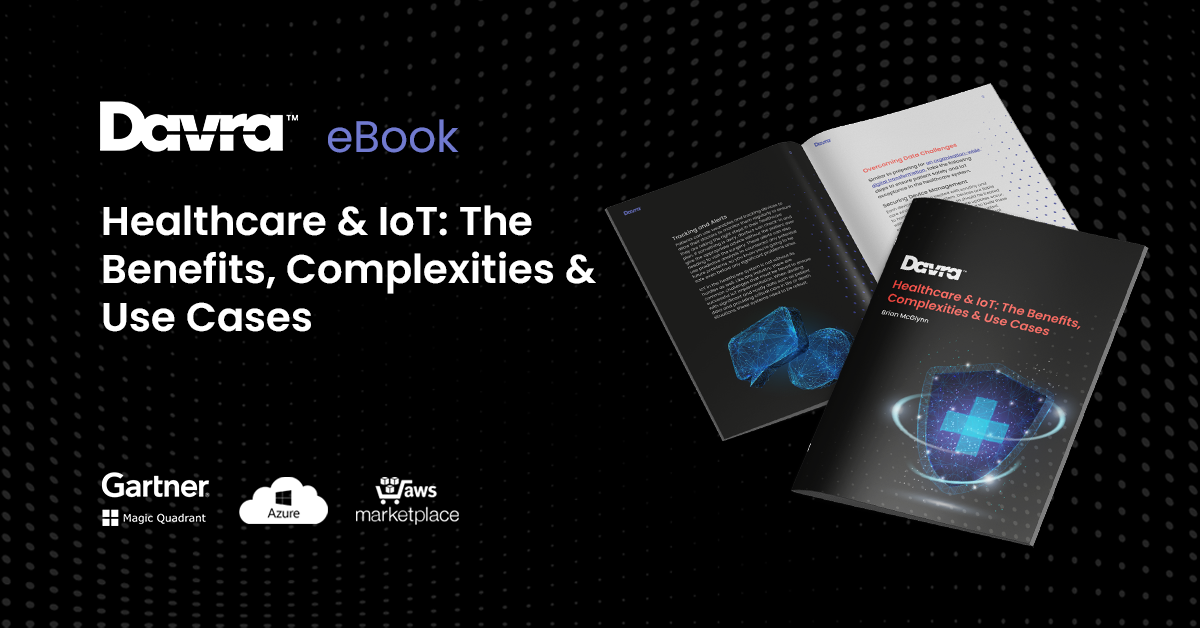IoT in Healthcare Use Cases eBook
Download Your Free IoT in Healthcare Use Cases eBook
Read More


Every year we see the growing statistics surrounding IIoT and security threats. Issues surrounding ransomware and malware cyberattacks are growing due to the increase in connected devices in organisations. The vast array of chips, sensors and actuators that are embedded in these physical devices opens up a whole new world of potential attacks and unforeseeable data breaches. This presents a major challenge for companies who want to envelop the IoT opportunities or grow their current IIoT operations.
Although this might sound daunting and incite fear, “why should we even invest in IoT then?!”, if you take the right approach from the beginning you can offset many of these obstacles. One of the more advanced ways to improve IoT security is through blockchain. Although we’ve discussed IoT security before on our blog, today we’re going to delve into how blockchain can advance our security mechanisms.
You might be familiar with blockchain as a distributed ledger technology. But even that can be a mouthful! According to Investopedia, a distributed ledger is a “database that is consensually shared and synchronized across multiple sites, institutions, or geographies, accessible by multiple people. It allows transactions to have public “witnesses”. The participant at each node of the network can access the recordings shared across that network and can own an identical copy of it.”
In simplistic terms, a blockchain system consists of a distributed digital ledger, shared between participants in the system, that resides on the Internet: transactions or events are validated and recorded in the ledger and cannot subsequently be amended or removed. It provides a way for information to be recorded and shared by a community of users. Within this community, selected members maintain their copy of the ledger and must validate any new transactions collectively through a consensus process before they are accepted on to the ledger.
Blockchain clearly works as a decentralised system due to the number of nodes or people working together to verify that what is being stored on the ledger is true. But this goes against how typical IoT systems work due to relying on client-server or hub-and-spoke architecture, which is a centralized authority. But the technology behind sensors and smart chips is evolving rapidly, making them increasingly portable and applicable for real-time interactions with blockchain ledgers.
When both are properly integrated, the results can lead to achievements such as decreased costs and greater efficiencies. This involves following all the usual connected device security protocols and developing a strategy for multilayered security with end-to-end protection, from the gateway to the endpoint, that is capable of preventing any potential intrusions and compromise in the network.
It is clear that blockchain will ramp up any IoT security concerns by authenticating and authorizing encrypted device-generated data with its decentralised ledger technology. Introducing new standards of data transparency and peer-to-peer communication, blockchain can add a new degree of security to IoT systems and provide organisations with better management practices.
Blockchain not only impacts security but also provides other benefits to the IoT space too.
1. Supply Chain Management
In IoT supply chains, blockchain can verify product provenance or traceability, and track assets as it creates trusted relationships between suppliers and buyers by generating encrypted, unchangeable records.
2. Transportation & Logistics
Companies that are involved in logistics are accustomed to working with various intermediaries to ship and deliver packages. Therefore, it is clearly beneficial to understand how sharing data generated from one company’s IoT sensors at a port, in a warehouse or on a delivery truck could be shared with others in the supply chain to refine processes and provide better customer experiences. Transportation and logistics are one of the industries in which more companies have been embarking on proof-of-concept testing of use cases in IoT architectures along with blockchain to share encrypted data between various organisations.
3. Water and Waste Management
Smart water sensors can be taken a step further by tracking water levels to admonish wasted water, and then publish any findings to the distributed ledger. These measurements are stored on the ledger in a contract-like manner and can’t be tampered with, and also enables important decisions to be made in a safe and controlled way about how to manage the water.
IoT security concerns are ever-growing, but with developing blockchain technologies and 5G rollouts, companies can rest assured that these developments will have a positive impact on their IoT organisation for years to come. If you would like to chat with us about how blockchain can benefit your company down the line, please contact us today.
Brian McGlynn, Davra, COO
Download Your Free IoT in Healthcare Use Cases eBook

Davra IoT is the only Industrial IoT Platform Available on AWS Marketplace
Read MoreThe Collaboration of Humans & Robots Has Created The Cobot
Read More